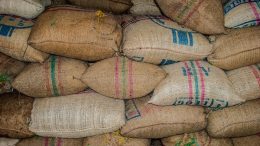Exporting or importing from Cameroon and many other sub-Sahara Africa countries seems to be very complex. It is difficult for you to know the procedures to follow. The export procedure seem to vary from one custom clearing agent to another.
However, this does not mean the procedure is difficult. You just need to take time to find out the details. The situation is not very different from other countries in Africa. Checkout a recent post we made on what you need to know to import and export from Cameroon. We will be updating you each time we cover any other country in Africa.
Export Procedure in Cameroon
The export operations in Cameroon have been centralized at the One-Stop Shop for Foreign Trade. The One-Stop Shop brings together the different departments and actors in export operations. Do you plan to export from Cameroon? Check below export procedure to follow in order export merchandise from Cameroon to other countries in the world.
1. Fumigation and Phytosanitory Inspection
The treatment or fumigation and phytosanitory inspection concerns cocoa, coffee and logs.
-
Cocoa and Coffee Fumigation: Those who want to export cocoa or coffee in Cameroon must first of all start by:
Recommended: How We Started A Roast Coffee Export & Import Business In Cameroon
– treatment of the product by an authorized company
– has to be issued a verification report
– must be delivered a phytosanitary certificate from the phytosanitary unit at the One-Stop Shop
– must be up-to-date with various dues or fees charged by the National Cocoa and Coffee Board, NCCB, the Cocoa and Coffee Inter-professional Advisory Board, international organizations like the International Coffee Organization and the International Cocoa Organization
– must be delivered a Certificate of Origin
Fumigation of cocoa and coffee can take up to 72 hours. However, exporters can treat their cocoa and coffee in advance and stock them in warehouses or chain-stores that have been established for them at the Douala port. You can find a list of chain-stores posted at the notice board of the One-Stop Shop. All coffee and cocoathat have been stocked in the warehouse is immediately certified by the phytosantary department.
-
Phytosanitary Inspection for Wood: The exportation of logs from Cameroon has two steps to follow:
– issuance of an inspection request by the phytosanitary service at the One-Stop Shop on the bases of the sales contract, log lists and specifications issued by the forestry department
– issuance of a Phytosanitary Certificate by the phytosanitary service at the One-Stop Shop
2. Obtaining an Export declaration
The export declaration is issued by SGS upon presentation of the necessary documents of the product to be exported. According to the type of product or merchandise to be exported, SGS will issue a number of samples of Export Declaration to the exporter.
Restricted Products
It should be noted that some products are restricted or prohibited for export. Such merchandise are allowed to be exported only upon special authorization. These include species that are near extinction as per the Convention on International Trade in Endangered Species of Wild Fauna and Flora, CITES. Some of them include apes, lemurs, pandas, the South American monkeys, balunis, rhinoceros, cheetahs, parrot, snakes, turtle, prey birds, cranes, tigers, leopards, elephants, etc.
Read Also: Want To Start An Import-Export Business In Africa? You Need To Read This First
3. Direct Debit Using Domiciliation of the Export Declaration
The exporter has to domicile the transaction at a bank for operations to be carried out. The documents needed to obtain the export declaration depends on the goods to be exported:
|
Cocoa / coffee |
Timber |
Manufactured Goods Subject to VAT |
|
– The Export Declaration (ED) or stamped F1 in 6 counterparts – The quotation in 2 copies – The receipt- An appropriate folder |
– The ED or stamped F1 in 6 counterparts –The sale agreement |
– The ED or stamped F1 in 6 counterparts – The quotation in 2 copies |
With the above documents, the bank will proceed with the procedures for direct debit using domiciliation. The exporter will then have go to the exchange office in order to register the export domiciliation. The signed documents are then given back to the economic operator who in turn takes it to the domiciliation bank and then to the Customs Service.
4. Payment of Dues
Dues that are paid depends on the type of merchandise to be exported. The dues include:
-
Port Authority Fee which is calculated on the bases of the packing list. The fee is paid at the bank which has been opened at the One-Stop Shop. A receipt is issued by the bank and the Douala Port Authority is immediately informed a transfer has been done to their account.
NCCB / CICC Fee in the case of cocoa and coffee is paid to the benefit of
– the National Cocoa and Coffee Board, NCCB itself
– the Cocoa and Coffee Inter-professional Advisory Board, CICC
The documents necessary for the calculation of this fee are:
– Parking list
– A checque issued to NCCB and CICC
– A manual count certificate
The exporter is entitled to a certificate showing the dues have been paid and also the issuance of a Certificate of Origin.
From the above, you will see that the export procedure in Cameroon is not as complex as the clearing agents make it look like.
Was this post about the export procedure for Cameroon helpful? If yes, then make sure you share it with friends and family who may be interested. Don’t hesitate to leave a comment below or get in touch with us if you need help. To continue to get more of such information, make sure you signup for our newsletter to stay up-to-date on our posts.
[mailerlite_form form_id=1]
Discover more from OpenHub Digital
Subscribe to get the latest posts sent to your email.

